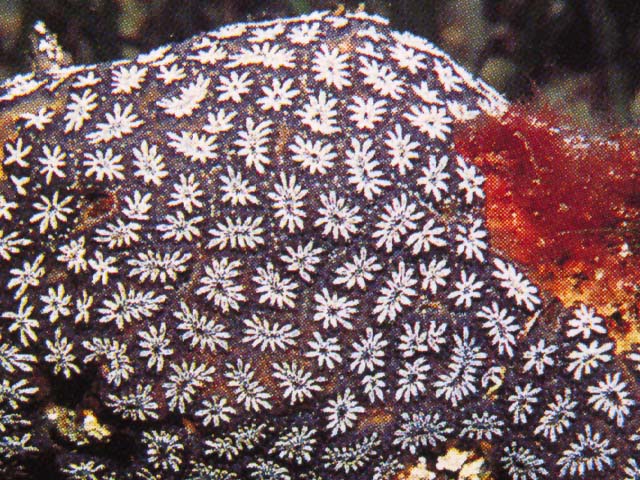Get 1000 Hours free
On the UCSD Supercomputer
Start Your Trial
Phylogenomics and systematics of botryllid ascidians, and implications for the evolution of allorecognition
Nydam et al. (2023) Frontiers in Ecology and Evolution
Allorecognition is the ability of an organism to discriminate between self and non-self. This capability is as old as life on earth, and is widely considered to be a basic requirement for all living systems. In vertebrates, the best known system for discriminating self from non-self is the Major Histocompatibility Complex (MHC). In addition to its role in immune response, the MHC provides the basis for non-host transplant rejection and graft vs host reactions.
While apparently unrelated to the MHC system, the self/non-self recognition systems of lower chordates are 500 million years older, and have been studied intensely. In 1903, Bancroft noted that two fragments from a single colonial ascidian of genus Botryllus fused readily, while fragments from distinct colonies did not. In 1957, this form of self/nonself recognition was found to be under genetic control and was designated as "colony specificity".
Like the MHC, colony specificity in Botryllids has been shown to be the result of a complex and highly polymorphic set of transmembrane proteins. Unlike the MHC, the system seems to be part of a larger system to promote genetic diversity within the species.
The principal determinant of compatibility in ascidians is the fuhc protein, which has two tandem EGF domains and three tandem immunoglobulin (C2 type) domains anchored by a transmembrane region and an intracellular tail. Like the MHC, fuhc is highly polymorphic, with as many as 100 alleles described in Monterey Bay alone. While it is clear that fusion succeeds only if the participating colonies share one or both fuhc alleles, the biochemical nature of the rejection response is complex, and remains a subject of study.
Importantly, the nature of the rejection reaction varies from species to species. Five types of rejection have been described (R-Type A-E), based on how far the fusion process has progressed before rejection begins. Noting that variations in the rejection response across species may shed light on both the evolutionary history of the ascidian rejection response and the detailed molecular mechanisms of this ancient self-recognition mechanism, Nydam et al. DOI 10.3389/fevo.2023.1214191 undertook a detailed study of the rejection response across known Botryllids.
Using RAxML at CIPRES, the authors constructed a tree containing ascidian 40 species and including the fifteen species for which the rejection type is known.
Key Findings:
